Our latest roundup of recommended reads related to film and pop culture is full of wonderfully outsized personalities like Nicolas Cage, Michael Cimino, and Dennis Hopper; brilliant filmmakers like Sofia Coppola and Sarah Polley; and entertaining figures both real (Bob Odenkirk, Keanu Reeves) and fictional (James Bond).
Let’s start with Cage, who has more than earned a lengthy career overview.
Age of Cage: Four Decades of Hollywood Through One Singular Career by Keith Phipps (Henry Holt & Co.)
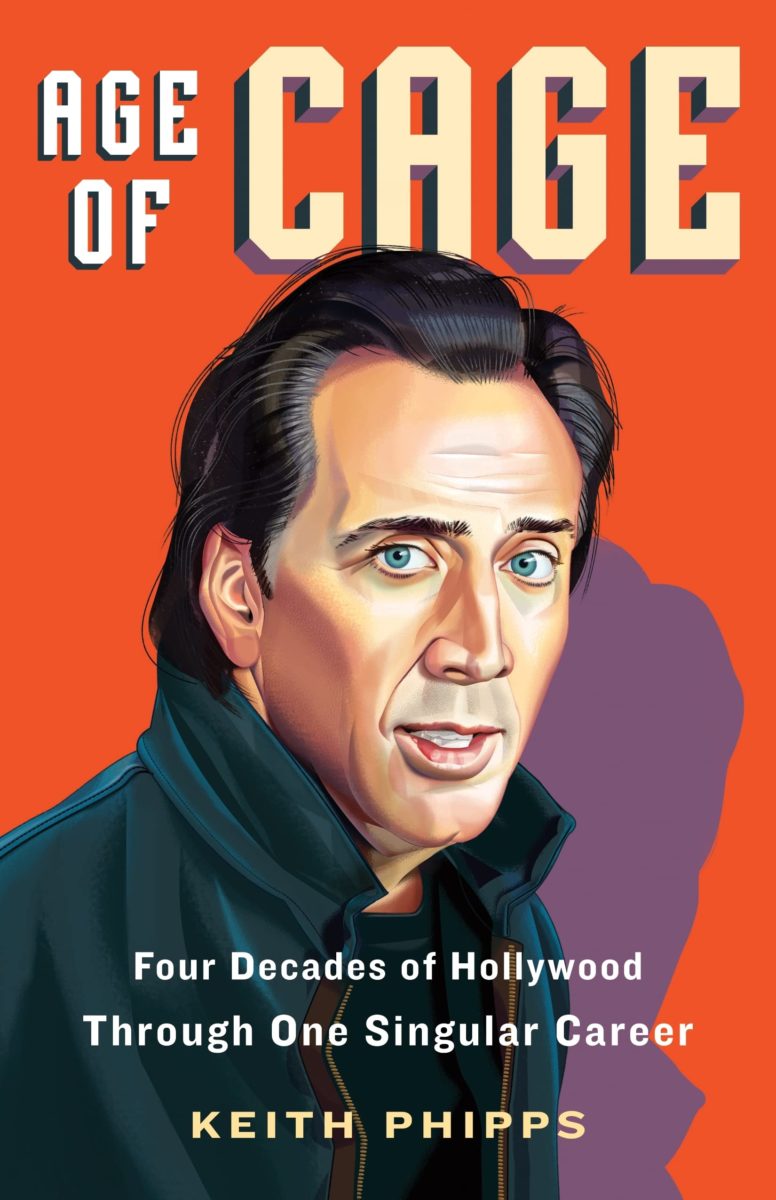
In a recent Rolling Stone interview, Nicolas Cage brought up Keith Phipps’ Age of Cage, commenting that the author “said some pretty articulate, intelligent things about the transformations the filmmaking industry has gone through in the 40 years” Cage has been working. It is very Nicolas Cage for the actor to not only be aware of Phipps’ stupendous book, but to bring it up himself, unsolicited, in an interview. Indeed, Age of Cage is as astute, entertaining, and unpredictable as its subject. Phipps, a veteran of the AV Club, The Dissolve, and Uproxx, charts the ups and downs of Cage’s career — the “Cageography” at the book’s end is staggeringly dense––with humor and real insight. As Phipps notes, the transformations Cage referred to in that Rolling Stone piece are particularly relevant when pondering his work: “Even when Cage hasn’t been a part of those changes––he’s been affected by them. And in retrospect, he’s often been ahead of the curve, most recently by appearing in movies meant to be seen at home before streaming services normalized watching movies at home and before COVID-19 made it compulsory.”
Cimino: The Deer Hunter, Heaven’s Gate, and the Price of a Vision by Charles Elton (Abrams Press)
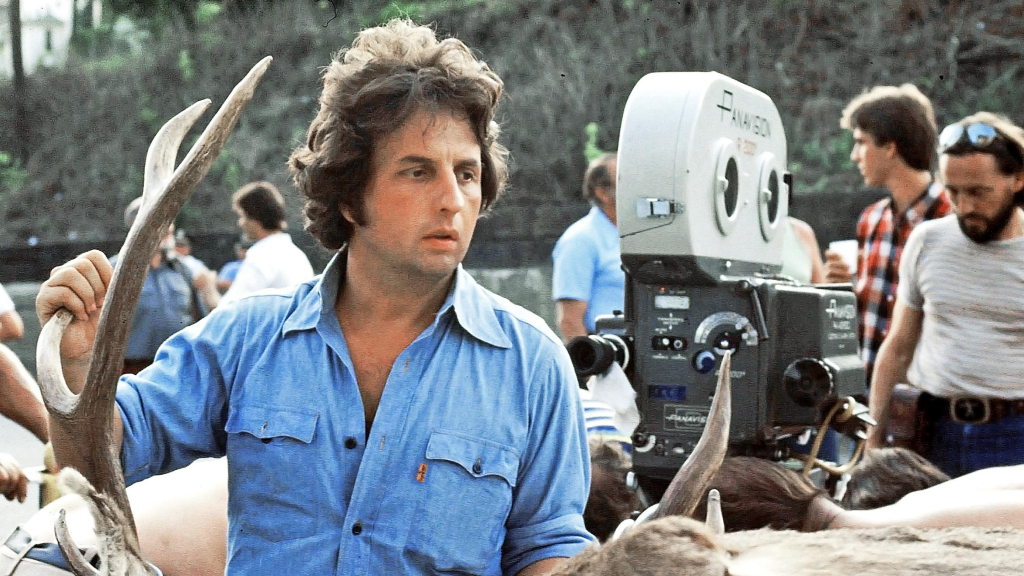
Somehow, Charles Elton’s beautifully written, exhaustively researched Cimino is the first biography of the Icarus of New Hollywood, Michael Cimino. It was worth the wait. Elton captures the scope of a singular career, one of massive highs (The Deer Hunter), colossal lows (the now-celebrated Heaven’s Gate), ongoing falsehoods (many surrounding Cimino’s youth and family), and utter strangeness. The filmmaker comes across as a brilliant enigma. “Of all the things Cimino was, there were many things he was not,” Elton writes. And that turn of phrase nicely captures the secretive fallen titan. There are some shocking revelations here, and, throughout, some gorgeous writing. Consider this, from the book’s opening, as Elton reflects on Cimino’s 2015 comments about a locked room in his home in the Hollywood Hills that includes a “mountain” of scripts: “I was haunted by that other room, the room that had been neat with stacks of scripts and files before the earthquakes made them tumble in disarray, the room that Cimino kept locked because he could not bear to look at it.”
Sofia Coppola: Forever Young by Hannah Strong (Abrams)
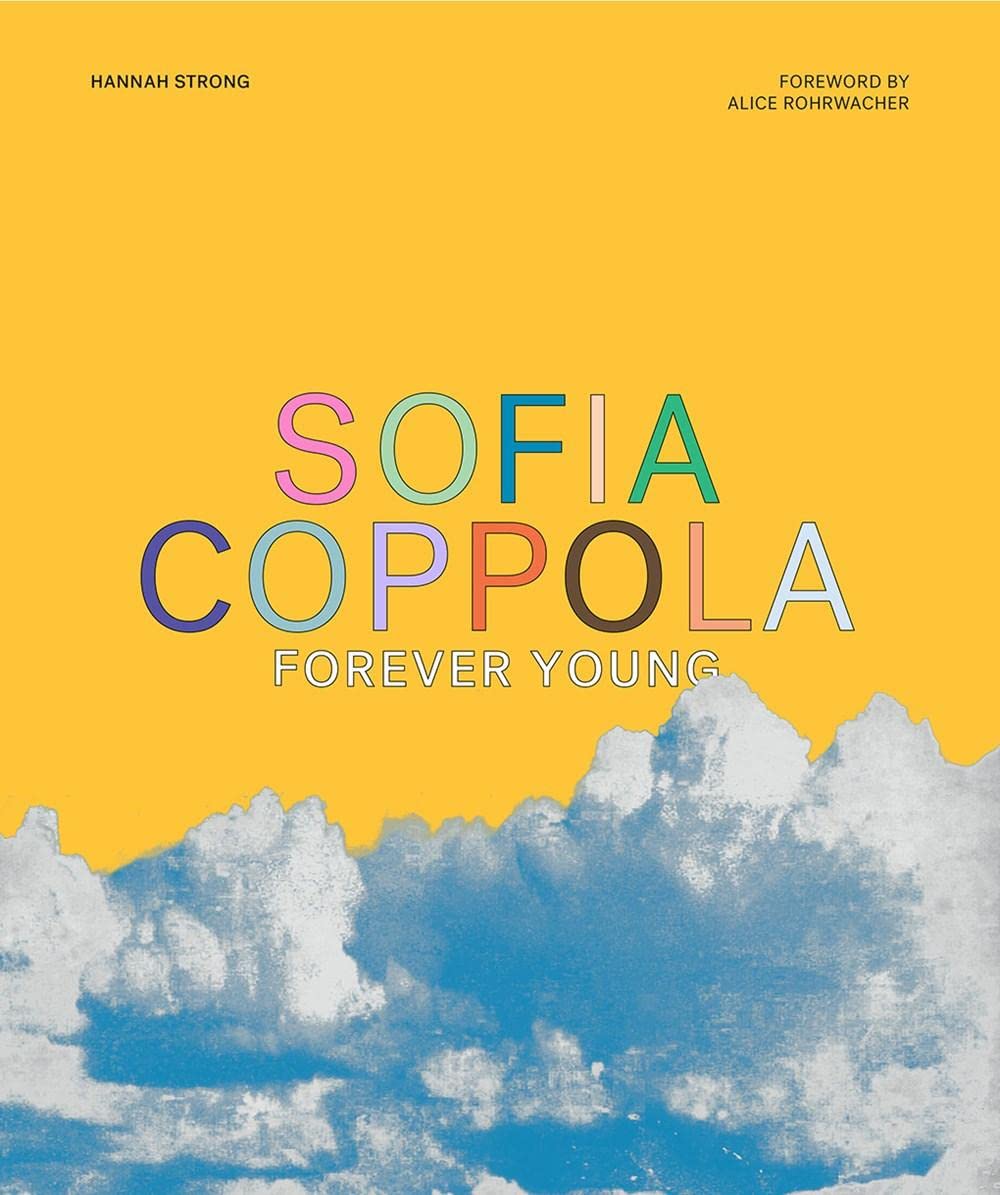
Past Film Stage columns have covered Abrams’ beautiful, info-packed appreciations of filmmakers like David Fincher, Joel and Ethan Coen, Robert Altman, and Wes Anderson. Hannah Strong’s Sofia Coppola: Forever Young is a stellar addition to the Abrams canon. Strong smartly divides the book into thematic sections––among them, “Innocence & Violence” (The Virgin Suicides and The Beguiled) and “Celebrity & Excess” (Marie Antoinette, The Bling Ring, and A Very Murray Christmas). In addition, her essays are supplemented with interviews with Coppola collaborators like Kirsten Dunst and Brian Reitzell. Strong is an extraordinarily intuitive writer, and her analysis of Coppola’s work is ultra-engaging; here is the author’s take on the iconic first shot of Lost in Translation: “With her [Scarlett Johansson] back to the camera, she seems to exist in her own world; our voyeurism is accompanied by the arched eyebrow of Coppola, who acutely understands the pressures of being a young woman observed by strangers.”
Everybody Thought We Were Crazy: Dennis Hopper, Brooke Hayward, and 1960s Los Angeles by Mark Rozzo (Ecco)
The vibe of Everybody Thought We Were Crazy, Mark Rozzo’s look at the marriage of Dennis Hopper and Brooke Hayward, is simultaneously somber and wistful. This was a time, after all, of great optimism and hope, as well as shocking violence and upheaval. Hopper and Hayward were two of the era’s most fascinating figures. “A nimbus of nostalgia surrounds 1960s Los Angeles as the fascination with the art and artifacts of that time––golden, complex, painful––expands with each passing year,” Rozzo writes. Indeed, no one’s existence was more complex and painful (and glorious) than that of Dennis Hopper, the Easy Rider star whose life turned torturous (“The seventies weren’t kind to Dennis”) before ultimately rebounding in the 1980s and nineties. And while it is not easy to compete with an icon as larger-than-life as Hopper, Rozzo also gives Hayward the focus she deserves. Everybody succeeds, then, as both a tale of two dynamic personalities and a deep exploration of sixties culture. It’s a tremendous achievement.
Keanu Reeves: Most Triumphant: The Movies and Meaning of an Irrepressible Icon by Alex Pappademas (Abrams Image)
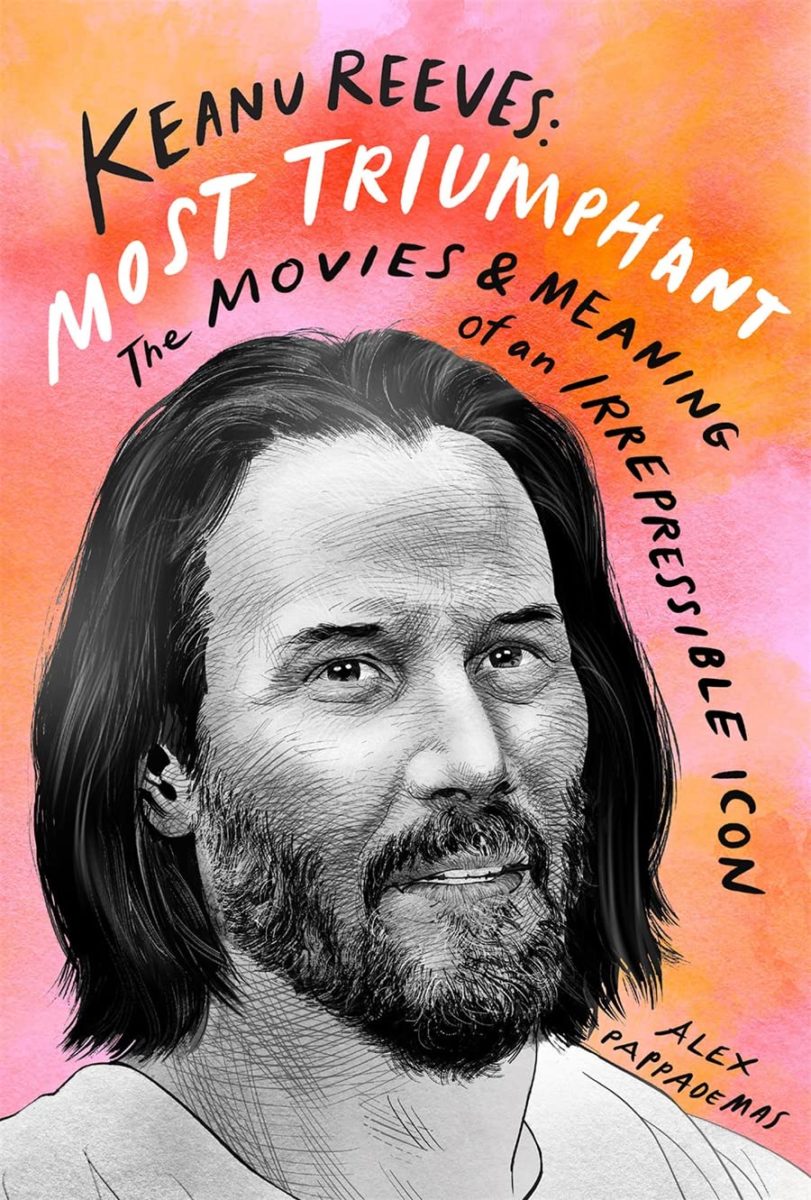
With the aforementioned Age of Cage and Alex Pappademas’ hugely entertaining look at the films and impact of Keanu Reeves, it’s a great time for studies of beloved actors. Most Triumphant spends significant time on Reeves as a cultural icon––meme inspiration, noted good dude, Dogstar bassist––and thoroughly covers his entire filmography. That means analysis of Bill and Ted, Point Break, My Own Private Idaho, Speed, The Matrix, and John Wick. But it also means studies of Bertolucci’s Little Buddha (“Keanu as a pure-kitsch Siddhartha”), the intriguingly disastrous Johnny Mnemonic (an example of an oft-occurring phenomenon in which “Keanu signs on to make one kind of movie which then becomes a very different kind of movie”), and even The Watcher (in which a “role he’d been told was a cameo ballooned into a co-lead in what turns out to be one of the very worst films he’s ever been in”). Pappademas approaches Reeves the man and actor with love, and that’s the right approach.
Run Towards the Danger: Confrontations With a Body of Memory by Sarah Polley (Penguin Press)
In a career of greatness––as an actor in films like The Sweet Hereafter, and as a filmmaker with Away From Her, Take This Waltz, and Stories We Tell––Sarah Polley’s Run Towards the Danger might be a high point. Yes, her new collection of deeply personal essays is that powerful. The writing about childbirth and recovery from a traumatizing concussion stands out, although the two sections that are likely to garner the most attention are an account of her sexual assault and unsettling memories of the dangerous shoot for The Adventures of Baron Munchausen. Polley was just nine years old during the making of Terry Gilliam’s bold, beautiful flop. A scene involving an explosion and a horse, taking place in a rowboat, almost killed her. Polley recounts the sequence of events in harrowing detail: “I remember not hearing anything, Eric [Idle]’s terrified face, the crew looking panicked at the edge of the tank. I remember a hard, crushing sensation in my chest, and being carried towards an ambulance as the crew looked on, alarmed.” Many years later, Polley has the opportunity to write to Gilliam, and a fascinating series of interactions follow. Gilliam comes off like a mischievous, gleeful monster, one seemingly immune to decency and common sense. The reader feels Polley’s wounds vividly, yet we also sense her strength, and admire her courage. Run Towards the Danger is no easy read, but it is undoubtedly a triumph.
After Kubrick: A Filmmaker’s Legacy edited by Jeremi Szaniawski (Bloomsbury Academic)
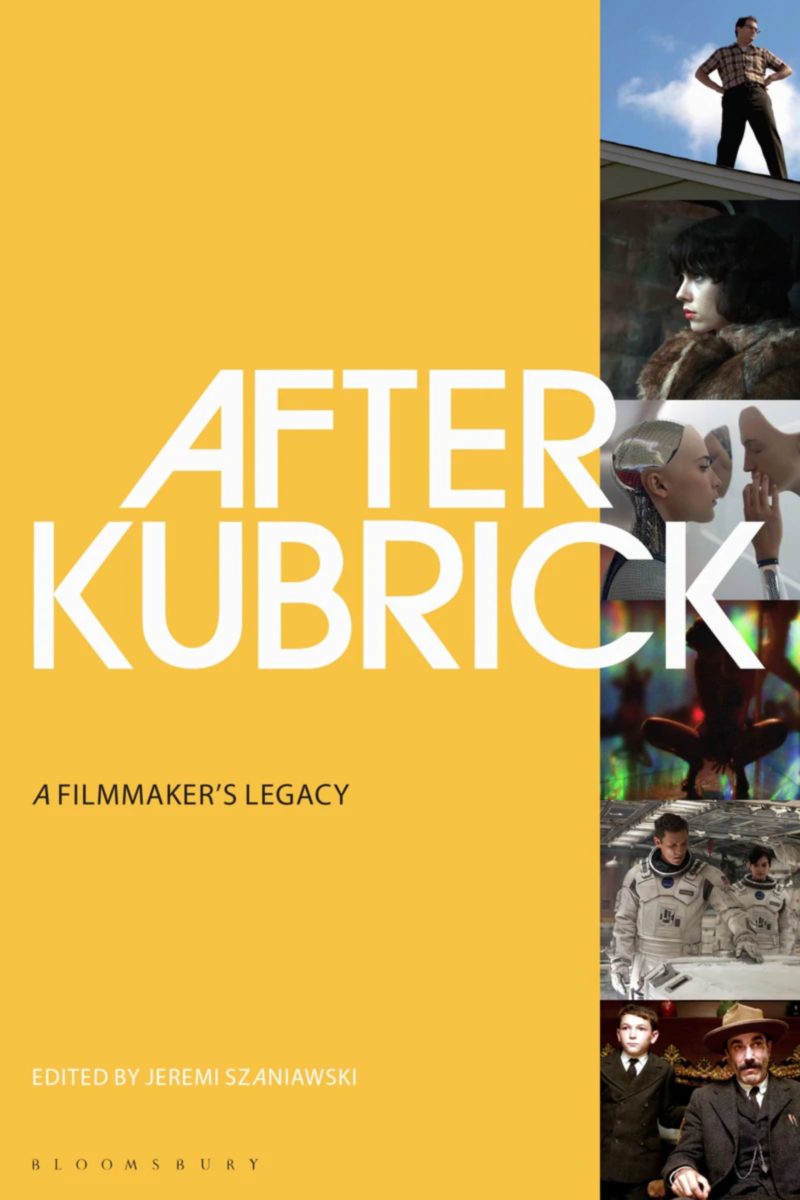
There are occasions in which films quite obviously allude to the work of Stanley Kubrick, sometimes to comedic effect. (See Everything Everywhere All at Once.) However, a number of filmmakers reference the late master in a more subtle fashion. These thematic and stylistic allusions are analyzed in After Kubrick: A Filmmaker’s Legacy, a book that treads new ground in Kubrick-ademia. The Coens, Paul Thomas Anderson, and Yorgos Lanthimos are just a few of the directors discussed. However, the freshest chapter in the book finds echoes of Dr. Strangelove, 2001, and The Shining in David Lynch’s Twin Peaks: The Return. Author Rick Warner specifically looks to episode eight, “in which the camera enters a cloud from an atomic explosion, pulling the viewer into a shifting vortex that distinctly reworks the stargate set piece in 2001.”
Subjective realities: The art of creative nonfiction film edited by Alex Heeney and Orla Smith (Seventh Row)
Watching Canadian filmmaker Sophy Romvari’s profoundly affecting short, Still Processing, on the Criterion Channel reminded me of a recent release from the stellar Seventh Row team, Subjective realities: The art of creative nonfiction film. Romvari is one of a number of featured filmmakers in the ebook, and her interview with writer Justine Smith sheds light on how she turned her footage, shot in 2018, into what would become her thesis film. “I sat on the footage for about a year because it was too overwhelming to look at,” Romvari says. “Finally, when I started to look at it, I wasn’t sure how I would turn it into a film that other people could watch.” One of my favorite aspects of the work of editors Alex Heeney and Orla Smith is that in addition to featuring well-known filmmakers (including, in this case, Kirsten Johnson and Gillian Armstrong), they also focus on rising talents like Romvari and No Ordinary Man directors Aisling Chin-Yee and Chase Joynt. Subjective realities is another essential Seventh Row ebook.
Bond, James Bond: Exploring the Shaken and Stirred History of Ian Fleming’s 007 by Brad Gilmore and Mike Kalinowski (Mango)
Recent years have seen a number of new texts documenting the James Bond film franchise, and there’s no doubt Bond, James Bond by Brad Gilmore and Mike Kalinowski is one of the most amusing. The authors write with real personality, moving through the history of Ian Fleming’s 007 while also sharing their thoughts on his many incarnations. Some of these opinions are surprising, like Kalinowski’s take on Timothy Dalton: “As great as Connery was, Dalton pushed even further and made Connery’s look positively tame in comparison.” The book runs all the way to No Time to Die, and even offers a comprehensive history of Bond in video games; of course, GoldenEye for Nintendo 64 is seen as the Goldfinger of Bond games. Bond, James Bond would make a fine companion for a series binge-watch, and that’s a real compliment.
Binge Times: Inside Hollywood’s Furious Billion-Dollar Battle to Take Down Netflix by Dade Hayes and Dawn Chmielewski (William Morrow)
Recent headlines about Netflix—“Netflix Plunges 25% After Company Loses 200,000 Subscribers”—are, um, not positive. However, there is still no denying its seismic impact on the entertainment world, a truth spelled out in Binge Times. Authors Dade Hayes and Dawn Chmielewski explore the other streaming giants (Hulu, HBO Max, Apple TV) and their many mistakes along the way, but the most captivating chapters look at the conception, birth, and death of Jeffrey Katzenberg’s Quibi: “The extravagantly well-funded startup whose founder bragged it would reimagine entertainment for the mobile era had instead delivered the app equivalent of New Coke: a vigorously marketed product that no one wanted.” A sequel to Binge Times in, oh, 10 years or so should be equally engrossing.
Nathan Rabin wanders through the worst (and the Weird)
Few chroniclers of pop culture write with the wit and insight of Nathan Rabin, the AV Club vet and author of the great My Year of Flops. His latest book, The Joy of Trash: Nathan Rabin’s Happy Place’s Definitive Guide to the Very Worst of Everything, is another wildly funny gem. While some of Rabin’s targets are expected (Jar Jar Binks, Baywatch Nights, The Book of Henry), there are some very offbeat subjects here, too. My favorite might be Robert Evans’ legendarily awful anti-drug spectacular, Get High on Yourself. In his (genuinely great) memoir, The Kid Stays in the Picture, Evans dubbed Get High “the Woodstock of the 1980s” due to its assemblage of the likes of Paul Newman, Bob Hope, and Ted Nugent (?). “The special’s grandiosity and messianic sense of purpose feel cocaine-induced,” Rabin writes, “as does the live-wire energy and jittery excitement of everyone involved.” The Joy of Trash makes the reader want to drop everything and watch the pop disasters Rabin excoriates. The author’s web store also features his recent analysis of “Weird Al” Yankovic’s discography, The Weird Accordion to Al, and a coloring book tribute, The Weird A-Coloring to Al, featuring illustrations by Felipe Sobreiro. Rabin and Weird Al are a match made in heaven.
New from The Batman, Batman, and Spidey
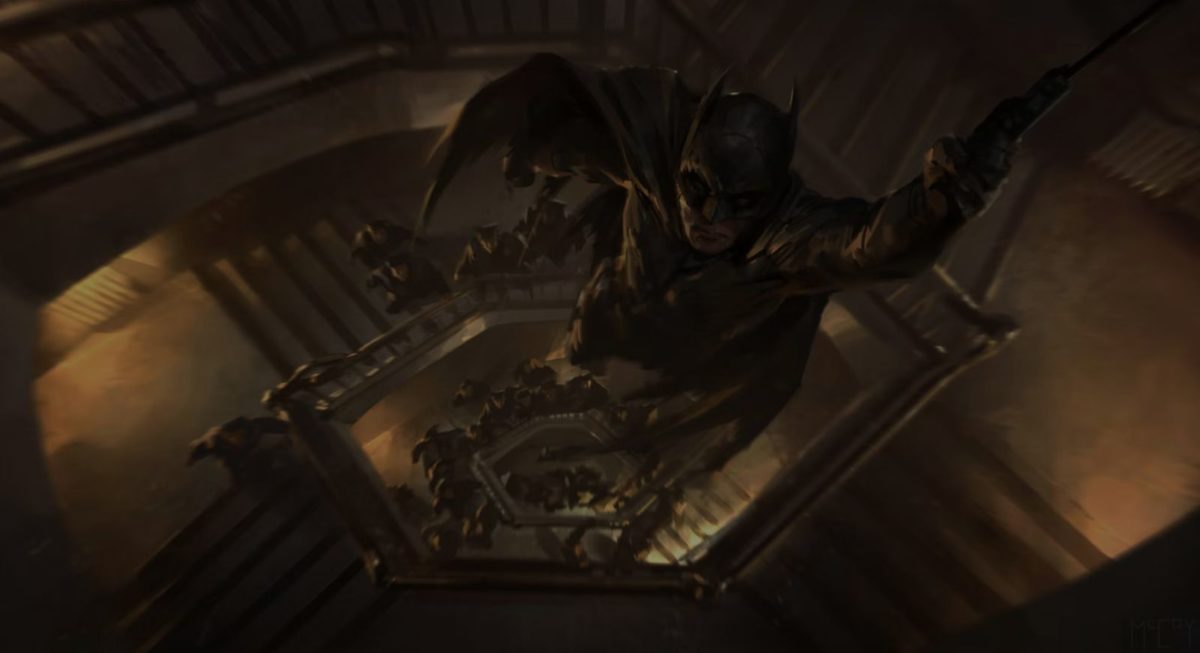
Matt Reeves’ The Batman was undeniably a work of real vision, and The Art of The Batman (Abrams) by James Field provides a painstakingly detailed account of the film’s design process. Of particular interest is the wardrobe evolution for Catwoman, and the ensemble’s visual links to the comics. This is a killer companion to a fine film, and features insightful interviews from Reeves and his team. Batman: The Ultimate Guide New Edition (DK) by Matthew K. Manning and Tom King is a startlingly comprehensive walk through the Caped Crusader’s comic book history; of particular interest are the backstories for possible future movie villains like Hush. And in the world of Marvel, The Moviemaking Magic of Marvel Studios: Spider-Man (Abrams) by Elenni Roussos is a colorful behind-the-scenes look at the making of Homecoming and Far From Home for young readers.
Hooray for Hollywood, etc.
Bloomsbury Academic’s Hollywood Screwball Comedy 1934-1945: Sex, Love, and Democratic Ideals by Grégoire Halbout examines some of the great films of 1930s comedy (My Man Godfrey, Bringing Up Baby) and, of course, key figures like Lubitsch and Sturges. Also highlighted are less-heralded but no less interesting efforts; I’m now dying to track down Mitchell Leisen’s No Time for Love, starring Claudette Colbert and Fred MacMurray. How the World Remade Hollywood (McFarland) by Ed Glaser is a fascinating study of the phenomenon of worldwide remakes of Hollywood products. These include Masoyiyata, a Nigerian remake of Titanic featuring song-and-dance numbers (and no nudity). Glaser succeeds in making the reader desperately want to see a few of these takes, which run the gamut from Jaws to The Evil Dead. And Danger on the Silver Screen: 50 Films Celebrating Cinema’s Greatest Stunts (Running Press) by Scott McGee is another fun Turner Classic Movies release, this one paying tribute to 50 motion pictures with standout stunt work. These include The French Connection, Bullitt, Vanishing Point, Mad Max: Fury Road, and even The Blues Brothers. Sprinkled throughout are factoids and behind-the-scenes tidbits.
Kings and queens of comedy
The outpouring of affection for Better Call Saul and Mr. Show star Bob Odenkirk after a 2021 health scare was a wonderful thing to see. Quite frankly, Odenkirk warranted that adoration. It is easy to come to that conclusion when reading Comedy Comedy Comedy Drama: A Memoir (Random House), a sweet, hilarious walk through his life and career. There are countless memorable stories here––of Chris Farley, about the failure of the (underrated) Odenkirk-directed film Let’s Go to Prison, of working with Spielberg in The Post. Through it all, Odenkirk comes across as utterly lovable, and oh-so-funny. “Naomi and I have been married for twenty-three years,” he writes about his wife. “Our secret to staying in love? Every Sunday, without fail, I give her twelve roses. And, just so she doesn’t get a swelled head, a note that says, “Here, my dear, is one rose for each of your faults.” Odenkirk and Judd Apatow famously worked together on The Larry Sanders Show, and the late Garry Shandling clearly made a major impact on both of them. Shandling is mentioned multiple times in Sicker in the Head: More Conversations About Life and Comedy (Random House), Apatow’s follow-up to the 2015 interview compilation Sick in the Head. Among the standouts is his chat with the incredibly talented Nathan Fielder, in which the latter explains how leaning into his awkwardness plays a part in Nathan for You’s success: “Even now, there’s this underlying stress in my chest about talking about myself. I’m terrified of being on camera, that I’m going to humiliate myself all the time. That’s a real motivator for making sure something’s good.”
New music books: Sellouts, Tony Wilson, and the road to Screamadelica
While Sellout: The Major-Label Feeding Frenzy That Swept Punk, Emo, and Hardcore (1994–2007) (Dey Street Books) is not exactly a book related to the world of cinema, its theme––the intersection of independent art and mainstream success––certainly resonates beyond the music business. Dan Ozzi astutely chronicles the rise of eleven key bands, including Jawbreaker, Green Day, Jimmy Eat World, and the Donnas. Tony Wilson is not mentioned in Sellout, but much of the late Factory Records’ kingpin’s career was spent traversing that thin line between art and commerce.
The subject of the fine film 24 Hour Party People (so memorably played by Steve Coogan) is profiled in From Manchester with Love: The Life and Opinions of Tony Wilson (Faber & Faber) by Paul Morley. It is a moving, funny, exhilarating read, fitting for the man whose record label unleashed Joy Division, New Order, and Happy Mondays on the world. Another pivotal figure of the last 40 years of U.K. music is Bobby Gillespie, frontman for the great Primal Scream. His memoir, Tenement Kid (White Rabbit), covers his youth in Glasgow, his time with the Jesus and Mary Chain, and the rise of the Primals, culminating in the band’s 1991 masterpiece, Screamadelica. The book features a number of notable cameos, including the “Mayor of the Sunset Strip” himself, Rodney Bingenheimer. The only criticism is that Gillespie ends on Screamadelica; I would love to read his memories of making 1994’s Give Out But Don’t Get Up.
Newly (or soon-to-be) adapted books:
The three greatest novels I’ve read in recent years––Station Eleven, The Glass Hotel, and now Sea of Tranquility (Knopf)––were written by the same author, Emily St. John Mandel. I’ve covered Hotel and Station in past columns, and while both are stunners, Sea of Tranquility is her most resonant work yet. It is a poignant, forceful novel that incorporates time travel, book tours, pandemics, and family in a story that stretches decades into the past and thousands of years into the future. The ending took my breath away. HBO recently brought Station Eleven to life, and next up are adaptations of Hotel and Tranquility. Mandel might be the most thrillingly creative novelist we have. In non-Mandel news, there is no debating the classic status of Nicolas Roeg’s take on Walter Tevis’ The Man Who Fell to Earth. But the novel––recently reissued by Vintage Books––is strange and lovely enough to warrant a new take. In this case, it’s a Showtime series starring Chiwetel Ejiofor and Bill Nighy.
No one writes exacting nonfiction accounts of tragedy like Jon Krakauer, and Under the Banner of Heaven (Anchor) is one of his finest. The series adaptation of this story of dangerous faith and the 1984 murder of a woman and her baby recently premiered on Hulu starring Andrew Garfield and Daisy Edgar-Jones. There is a good chance, at some point in life, that you read Stephen King’s Salem’s Lot (Anchor). But with its first big-screen adaptation on the way this fall, it is high time to revisit his 1975 vampire chiller. Martin Scorsese’s adaptation of Killers of the Flower Moon (Vintage) by David Grann will be released by Apple later this year, and its story of the Osage murders of the 1920s is haunting and unforgettable. The characters to be played by Robert De Niro and Leonard DiCaprio, William Hale and Ernest Burkhart, are profoundly evil. Washington Black (Vintage), by Esi Edugyan, will soon come to Hulu as a series starring Sterling K. Brown. It’s a truly magical novel about an escaped slave, and Brown is a perfect casting choice.
Annette Bening will star as Diana Nyad, a world record holder for swimming from Cuba to Florida, in a Netflix adaptation of her gripping memoir, Find a Way (Vintage). Carl Hiaasen’s hilarious, Florida-set Bad Monkey (now in ebook form from Grand Central Publishing), will soon be an Apple TV series starring Vince Vaughn. Mr. Malcolm’s List (Berkley) by Suzanne Allain is a Regency-era delight for Jane Austen fans; a film adaptation starring Freida Pinto is set for release in early June. Finally, the long-awaited release of Don Winslow’s City on Fire is one of the year’s true publishing events. An organized crime epic set in Boston, Fire is the first of a trilogy. A film adaptation is in the works, and it could be huge.
New novels that deserve to be adapted
Historical fiction revolving around Hollywood history can be quite enjoyable when written with care, and It’s Alive! (Greenleaf Book Group Press; released on May 17) by Julian David Stone is a perfect example. Centered around the making of 1931’s Frankenstein, the novel’s protagonist is Junior Laemmle, the real-life son of Universal Pictures co-founder Carl Laemmle. The book is an absolute hoot, and Stone vividly captures an important time in film history. I would love to see Shiva Baby’s dynamic duo of star Rachel Sennott and director Emma Seligman sink their teeth into Other People’s Clothes (Doubleday), a deliciously dark novel from Calla Henkel about two art students studying in Berlin and the thriller writer who may (or may not) be turning their lives into book fodder. The Paris Apartment (William Morrow), author Lucy Foley’s follow-up to The Guest List, is a twist-filled thriller set in a mysterious building full of suspicious neighbors; if you’re thinking modern-day Agatha Christie, you’re not far off.
Similarly involving is Megan Collins’ The Family Plot (Atria Paperback), a brisk novel involving a spooky mansion, twins, and a possible serial killer. Booth (G.P. Putnam’s Sons) by Karen Joy Fowler is a wildly compelling historical novel about the noted American theatrical family of the 19th century––which included the assassin John Wilkes Booth. The epic tale is likely to be adapted soon; its size and scope is ideal for a streaming series. Portrait of a Thief (Tiny Reparations Books) by Grace D. Li is the most satisfying heist novel in years. The story, about Chinese-American students attempting to steal plundered ancient Chinese art, feels fresh and timely. Just in time for the release of Obi-Wan Kenobi on Disney Plus is Star Wars: Brotherhood (Del Rey) by Mike Chen, a post-Attack of the Clones novel about the bond and growing tension between Kenobi and Anakin Skywalker. It’s a solid expansion of the duo’s story that also serves as a nice Kenobi teaser. Also worth checking out is the audiobook, read by voice-over vet Jonathan Davis. Finally, the latest High Republic era Star Wars novel, Tempest Runner (Del Rey) by Cavan Scott is a refreshing account of a villain known as Lourna Dee.
New to Blu-ray: The Last Waltz, The Matrix Resurrections, and Eastern Promises

Prior to the Criterion release of Martin Scorsese’s The Last Waltz, his film of the Band’s final gig on Thanksgiving, 1976, I read Robbie Robertson’s Testify. Robertson, the driving force behind the Band, details the weeks of planning and preparation that went into the staging of the concert. Somehow, it all worked, and the result was a masterpiece. The Criterion release included a lovely essay by Amanda Petrusich, who notes that the film captures a group “tottering on the edge of total physical and spiritual collapse, at odds about the future, unsure of their loyalties.” The Matrix Resurrections (Warner Bros. Home Entertainment), on the other hand, concludes with our heroes, Neo and Trinity, in a state of optimism and confidence. Perhaps this feeling, and Lana Wachowski’s desire to deconstruct the narrative, threw some audience members. For those feeling adventurous, though, the results were extremely satisfying. The 4K release includes more than two hours of bonus features, most notably a half-hour look into its creation titled “Resurrecting The Matrix.” Lastly, David Cronenberg is back in the news, as his first film in eight years, Crimes of the Future, is set to stir up Cannes. It is a fine time, then for Kino Lorber to bring his 2007 gem, Eastern Promises, to 4K. Watching the film in 2022, it is easy to conclude that while acclaimed, Promises was underrated upon release. It ranks among Cronenberg’s most compelling works, and offers a type of “body horror” rooted in reality. The 4K release is packed with features, most of them featuring input from the director himself. Let’s hope sequel talk picks up steam again one day––but only if Cronenberg is back in the director’s chair.
